Opening to the public this Saturday, September 24, 2022 is a new exhibit titled, Night and Day: Frederic Remington’s Final Decade. On display through April 23, 2023, this exhibition explores works made in the last decade of Remington’s life, ranging from 1900-09, when the artist alternated his canvases between the color dominant palettes of the blue-green of night and yellow-orange of daylight.
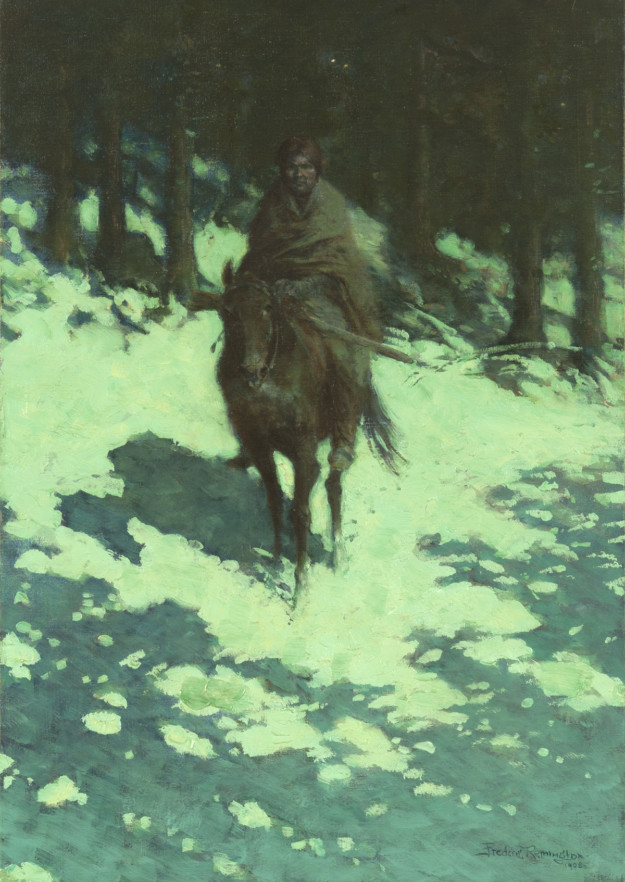
Frederic Remington | A Figure of the Night (The Sentinel) | 1908 | Oil on canvas | 30 x 21 1/8 inches
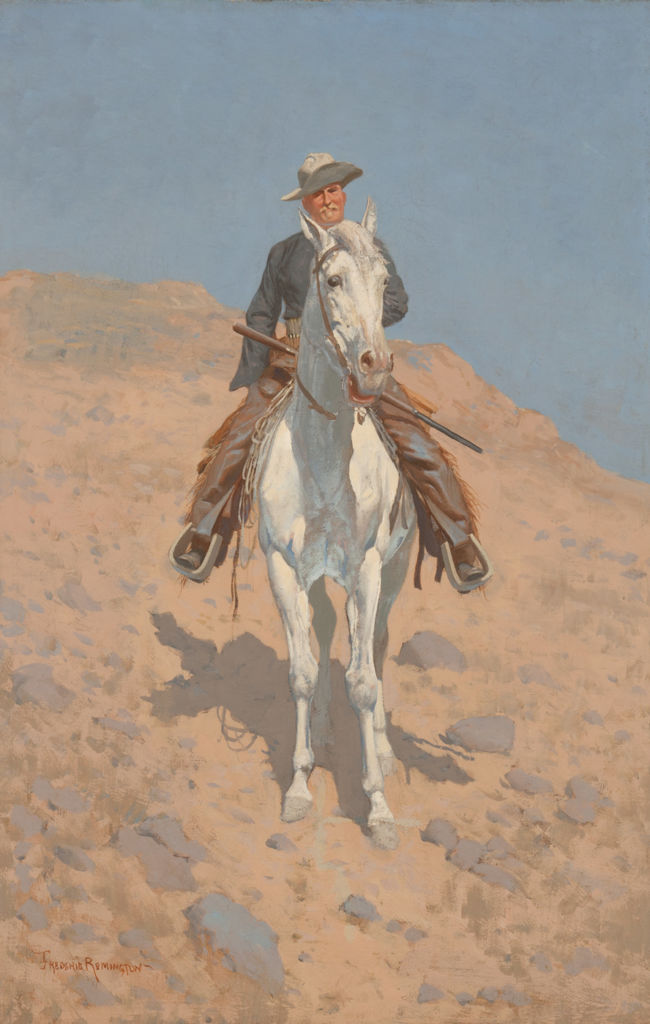
Frederic Remington | Self-Portrait On A Horse | c. 1890 | Oil on canvas | 29.1875 x 19.375 inches
When visitors enter the main gallery, they are greeted by a self-portrait of the artist (the only full-length self-portrait known in existence) wherein Remington has portrayed himself as a cowboy, a subject he made popular through his artwork. Painted around 1890, Self-Portrait on a Horse is a good representation of Remington’s early style when he was popularly known as an illustrator. Yet Remington yearned to be recognized as a fine artist. Not far from Remington’s Self-Portrait is The Old Stage-Coach of the Plains, on loan from the Amon Carter Museum of American Art, and is representative of the artist’s foray into nocturnes, or paintings of night scenes. Remington liked to call them his “moonlights.” Painted more closely in style of his early works like Self-Portrait, the 1901 Old Stage-Coach sits at the beginnings of Remington’s transition into new color palettes and mood-evoking compositions with his nighttime scenes being key to his quest for recognition as a fine artist.
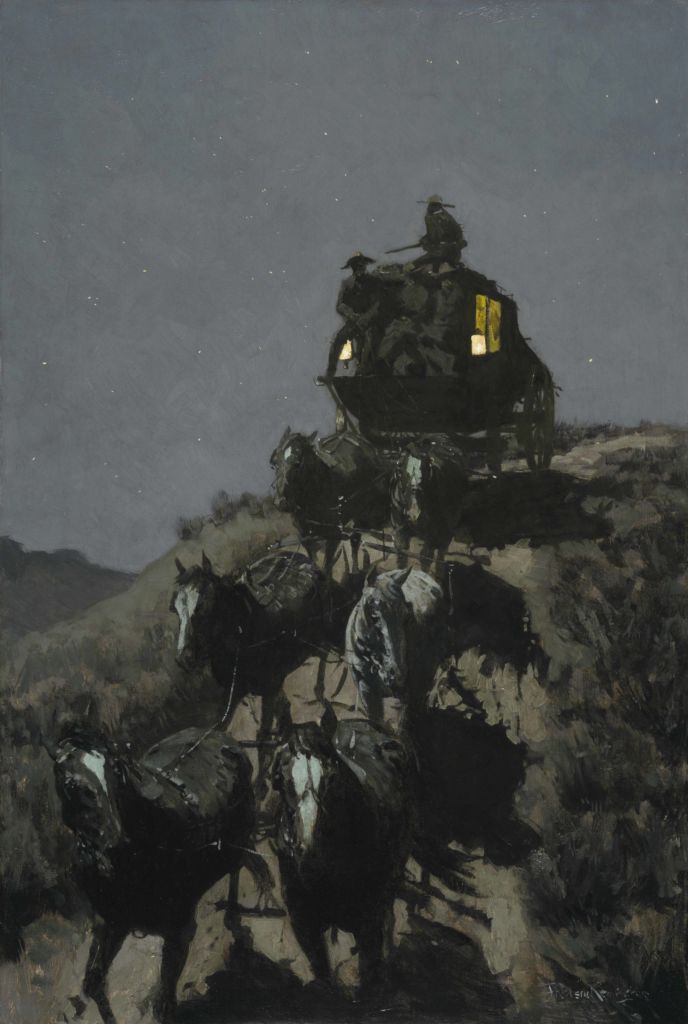
Frederic Remington, The Old Stage-Coach of the Plains, 1901, oil on canvas, Amon Carter Museum of American Art, Fort Worth, 1961.232
As visitors continue along the gallery, they will begin to see examples of how Remington returns to compositions and themes once represented in his illustration work and now reimagined as dynamically painted fine works of art. For example, Remington’s 1904 The Apaches! is a reworking of his 1886 illustration The Apaches Are Coming, reproduced in a volume of Harper’s Weekly. The painting demonstrates Remington’s maturation in his use of color, with his dominantly yellow composition contrasted with the lavender gray shadows and the streaks of light blue highlights in the horse and figures. A clear example of a revised work is his painting The Unknown Explorers, seen later in the exhibit. Originally produced in 1905 for the cover of Collier’s Weekly, Remington created a new version of the subject, as seen in the Sid Richardson Museum’s 1908 The Unknown Explorers, after the artist destroyed his earlier canvas. (There are many entries in Remington’s diary where he documented the burning of his paintings between 1907-09.) The 1908 painting is a contrast of warm and cool tones and looser in detail, exploring the subtle possibilities of paint.
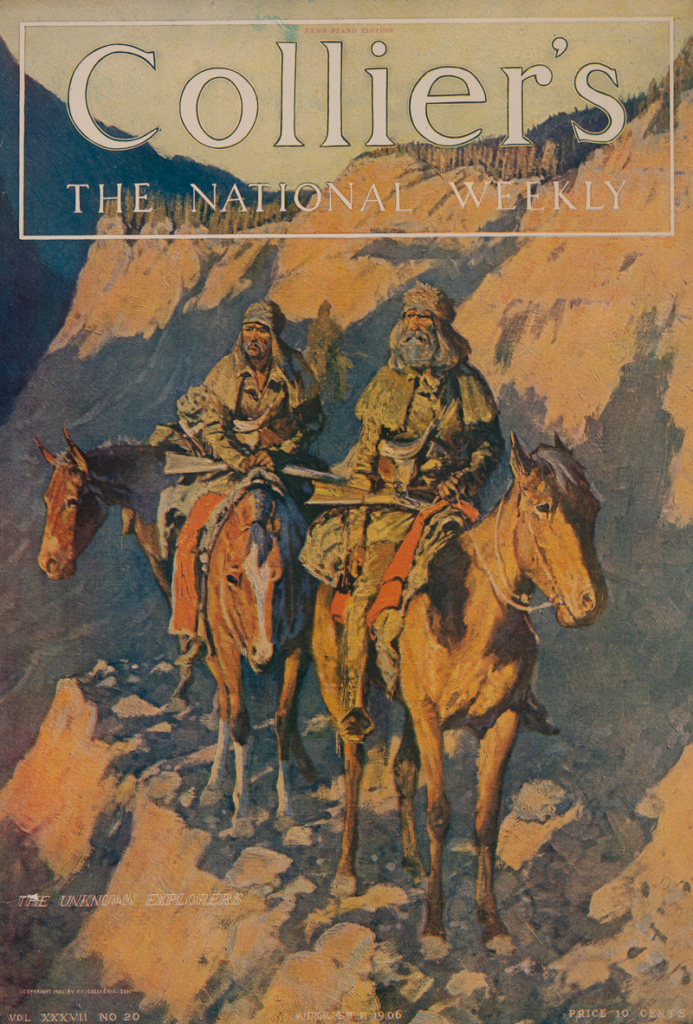
Frederic Remington, The Unknown Explorers, color halftone, ca. 1905, Collier’s Weekly, August 11, 1906, cover, Frederic Remington Art Museum, Ogdensburg, New York
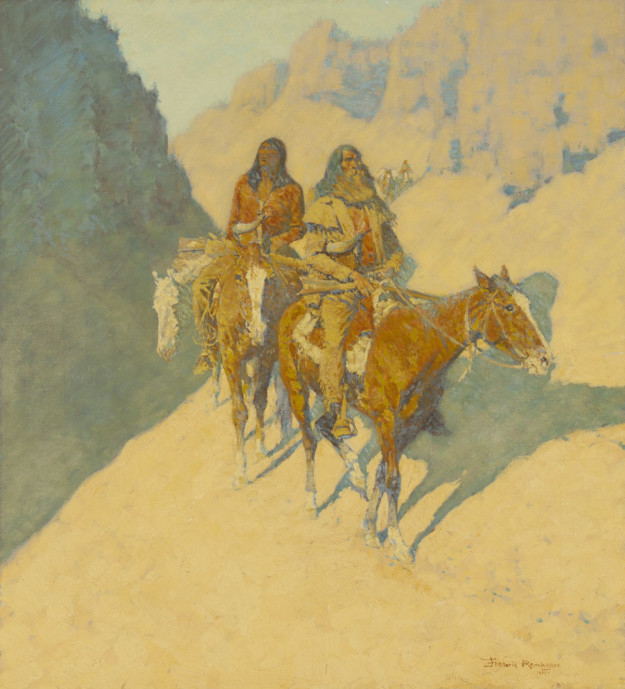
Frederic Remington | The Unknown Explorers | 1908 | Oil on canvas | 30 inches x 27 1/4 inches
A common theme in Remington’s work, as seen throughout the exhibit, is that of the lone horse and rider. In many of these works, the conflict is man versus nature. In Remington’s ca. 1905 painting The Herd Boy, the figure and his steed are frozen stock still, rooted in the snowy landscape facing into the driving cold. Later, in the artist’s 1909 painting The Luckless Hunter, the lone figure makes his way slowly across a bleak but stunning moonlit landscape one that Remington describes as a jaded, or exhausted, pony. The rider bundles himself stoically against the freezing wind that we see blowing the man’s hair and the horse’s mane and tail. Similarly, the lone figure in Remington’s 1900 bronze The Norther, exhibits details in the textures of the bronze that allow the viewer to imagine the presence of the brutal, biting wind that envelopes both horse and rider. As Remington increasingly worked in three dimensions to create singular characters like The Norther, he also began to pare down and isolate his subjects onto the spare color fields that fill his canvases. This experimental bronze foreshadows the textural brushwork that would become a hallmark of Remington’s late impressionistic canvases.
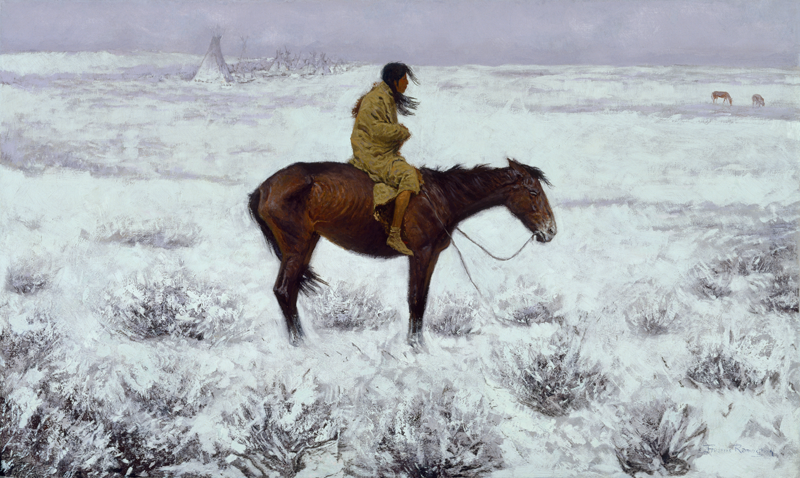
Frederic Remington, The Herd Boy, Oil on canvas, ca.1905, The Museum of Fine Arts, Houston, The Hogg Brothers Collection, gift of Miss Ima Hogg, 43.24, Photo Copyright: Photograph © The Museum of Fine Arts, Houston; Thomas R. DuBrock
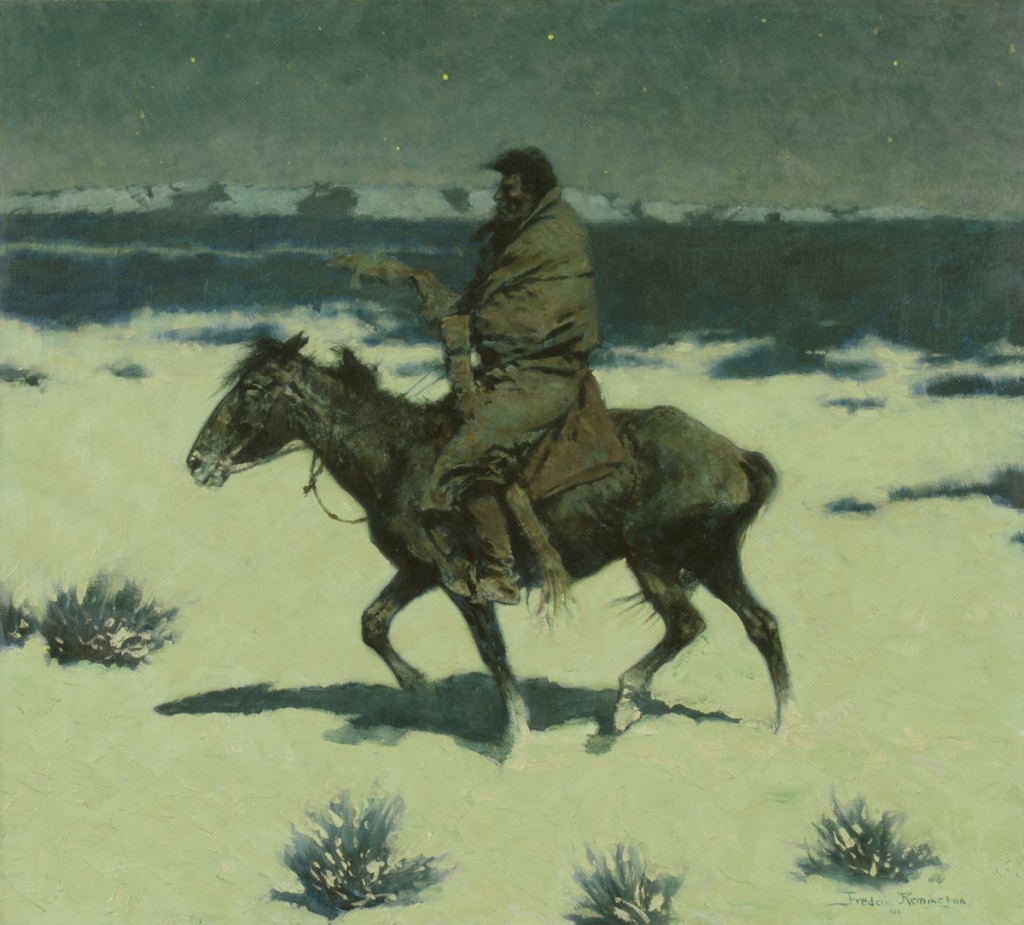
Frederic Remington, The Luckless Hunter, 1909, Oil on canvas, 26 7/8 x 28 7/8 inches
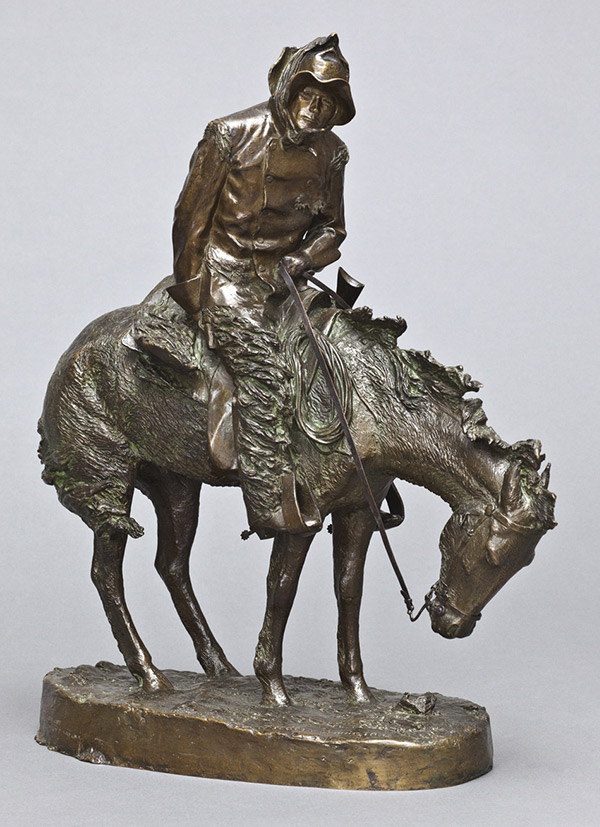
Frederic Remington, The Norther, 1900, Bronze, Private Collection
The paintings from Remington’s last few years show the artist’s progression into a saturated color palette and looser brushwork, pulling inspiration from the Impressionist art movement. The prominently displayed 1909 painting, Buffalo Runners – Big Horn Basin, is a great example of the artist’s style shift towards a more textural paint application and dappled fields of color. His shadows as seen in The Apaches! mentioned earlier are no longer dappled in lavender and gray but are now a mixture of brightly colored pastel strokes. The painting epitomizes the impact of Impressionism’s tenants on his work, despite Remington supposedly once dismissing an Impressionism exhibition by claiming: “I’ve got two maiden aunts in New Rochelle that can knit better pictures than these!”
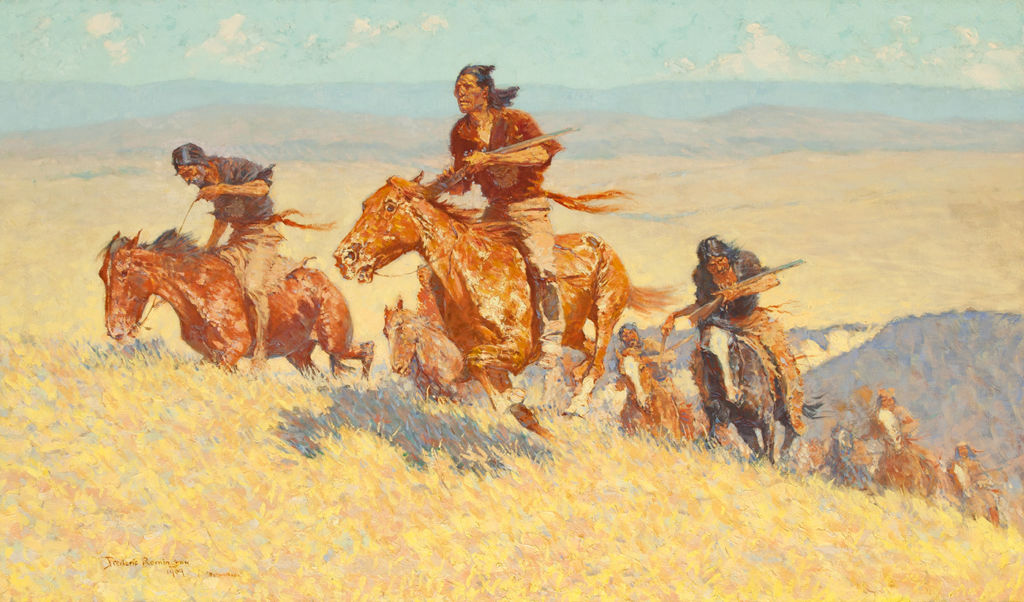
Frederic Remington | Buffalo Runners—Big Horn Basin | 1909 | Oil on canvas | 30.125 x 51.125 inches

Detail, Frederic Remington | Buffalo Runners – Big Horn Basin | 1909 | Oil on canvas | 30 1/8 x 51 1/8 inches
As his palette brightened and his brushwork loosened in these latter years, it’s unknown in what direction Remington’s work would have progressed. At the end of 1909, Remington’s life was cut short by complications due to appendicitis at the young age of 48. At the time of his death, the artist was in his prime and receiving the long-sought recognition from art critics for his work as a fine artist. We hope you will enjoy our special exhibition, Night & Day: Frederic Remington’s Final Decade and take the journey with us through the artist’s richly painted canvases depicting the American West.



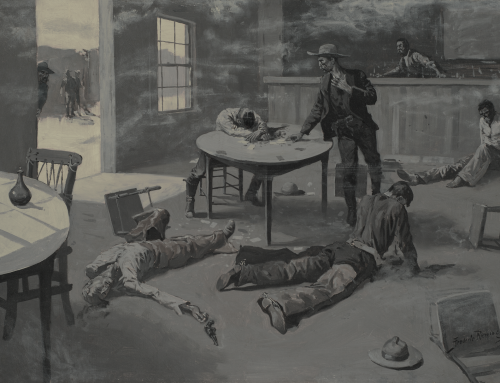
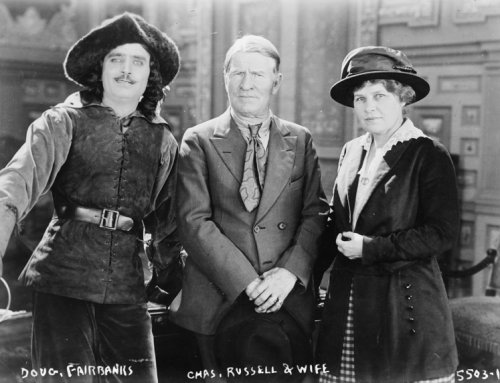
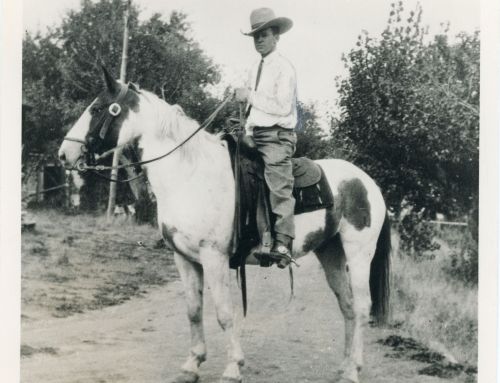
[…] our current exhibit, Night & Day: Frederic Remington’s Final Decade, visitors will observe how the artist returns to compositions and themes first represented in his […]